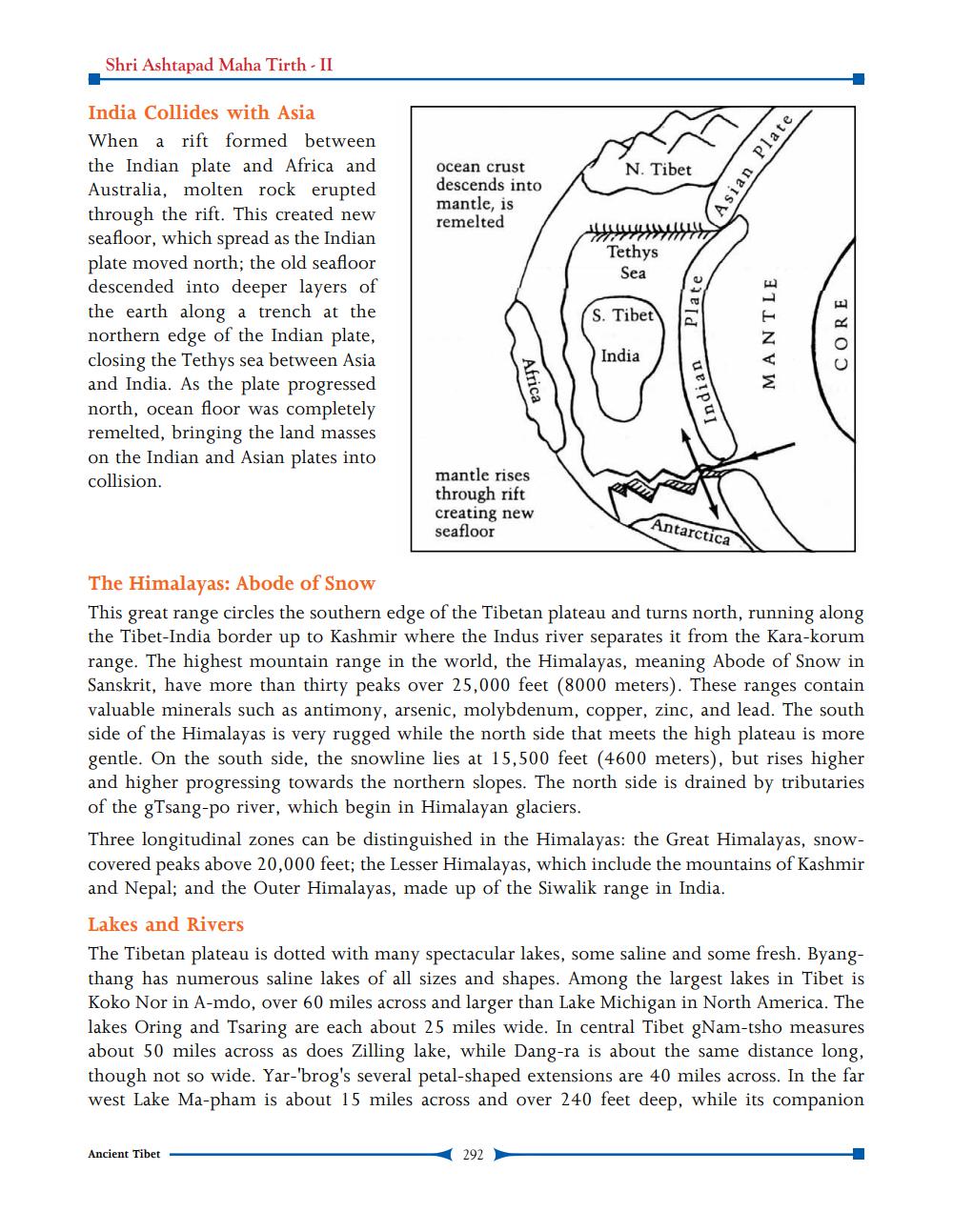________________
Shri Ashtapad Maha Tirth - II
N. Tibet
ocean crust descends into mantle, is remelted
Asian Plate
Tethys
Sea
India Collides with Asia When a rift formed between the Indian plate and Africa and Australia, molten rock erupted through the rift. This created new seafloor, which spread as the Indian plate moved north; the old seafloor descended into deeper layers of the earth along a trench at the northern edge of the Indian plate, closing the Tethys sea between Asia and India. As the plate progressed north, ocean floor was completely remelted, bringing the land masses on the Indian and Asian plates into collision.
Plate
S. Tibet
MANTLE
CORE
India
Africa
Indian
dian
mantle rises through rift creating new seafloor
Antarctica
The Himalayas: Abode of Snow This great range circles the southern edge of the Tibetan plateau and turns north, running along the Tibet-India border up to Kashmir where the Indus river separates it from the Kara-korum range. The highest mountain range in the world, the Himalayas, meaning Abode of Snow in Sanskrit, have more than thirty peaks over 25,000 feet (8000 meters). These ranges contain valuable minerals such as antimony, arsenic, molybdenum, copper, zinc, and lead. The south side of the Himalayas is very rugged while the north side that meets the high plateau is more gentle. On the south side, the snowline lies at 15,500 feet (4600 meters), but rises higher and higher progressing towards the northern slopes. The north side is drained by tributaries of the gTsang-po river, which begin in Himalayan glaciers. Three longitudinal zones can be distinguished in the Himalayas: the Great Himalayas, snowcovered peaks above 20,000 feet; the Lesser Himalayas, which include the mountains of Kashmir and Nepal; and the Outer Himalayas, made up of the Siwalik range in India.
Lakes and Rivers The Tibetan plateau is dotted with many spectacular lakes, some saline and some fresh. Byangthang has numerous saline lakes of all sizes and shapes. Among the largest lakes in Tibet is Koko Nor in A-mdo, over 60 miles across and larger than Lake Michigan in North America. The lakes Oring and Tsaring are each about 25 miles wide. In central Tibet gNam-tsho measures about 50 miles across as does Zilling lake, while Dang-ra is about the same distance long, though not so wide. Yar-'brog's several petal-shaped extensions are 40 miles across. In the far west Lake Ma-pham is about 15 miles across and over 240 feet deep, while its companion
Ancient Tibet
292




